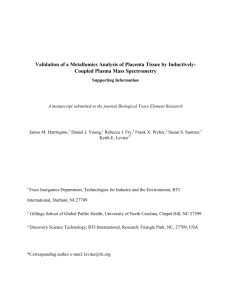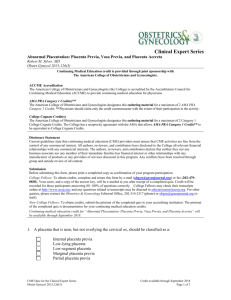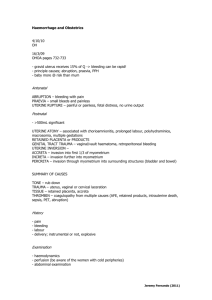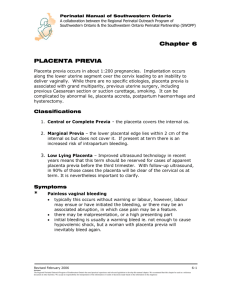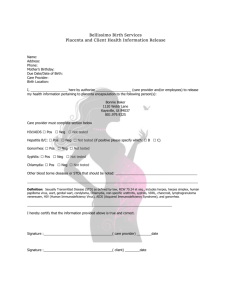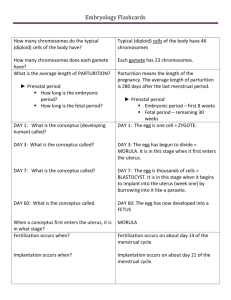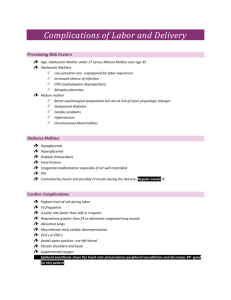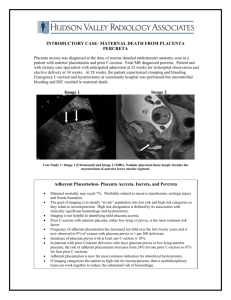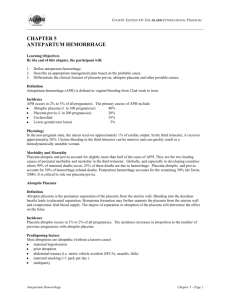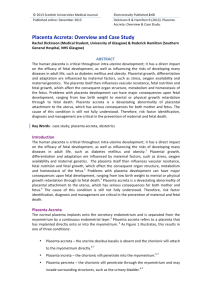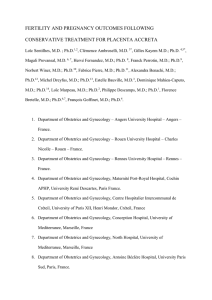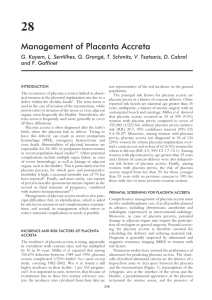Case Study - Michigan Sonographers Society
advertisement
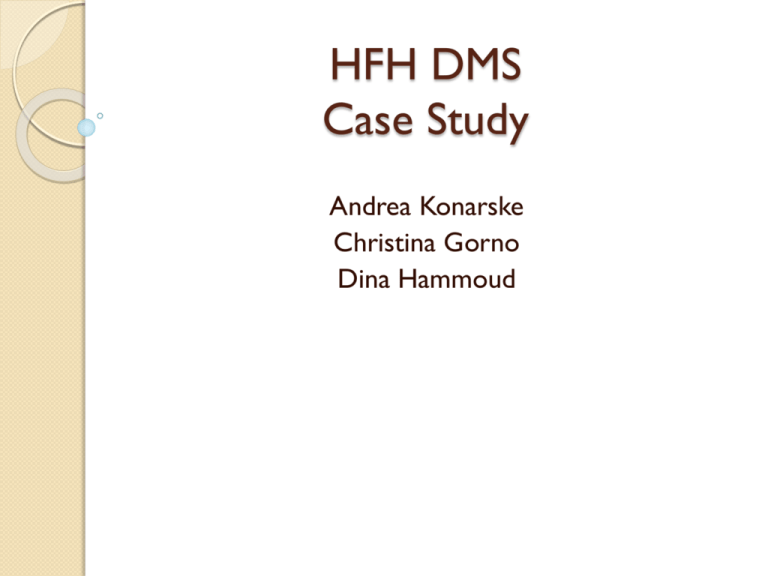
HFH DMS Case Study Andrea Konarske Christina Gorno Dina Hammoud History 29 year-old female Positive IUP G4, P2, SAB1, C-Section 1 13w 3d by LMP US Findings 2/12 Complete placenta previa was noted Otherwise, unremarkable first trimester ultrasound with a normal nuchal translucency of 1.27 mm Placenta Previa Nuchal Translucency within normal limits Placenta Previa Placenta partially or completely covers the internal os of the cervix Can cause severe bleeding before or during delivery which may be lifethreatening Can cause preterm birth Occurs in approximately 4.8 pregnancies per 1000 US Findings 2/19 Pt returned for a scheduled amniocentesis due to an abnormal blood screen (amnio returned 46 XY - normal) A total placenta previa with anterior and posterior wrap was again demonstrated Evidence of placenta accreta was seen Placenta and cervix assessed both transabdominally and trans-vaginally Cervix appeared long and closed Placenta Previa Placenta Accreta The ultrasonographic features suggestive of placenta accreta include irregularly shaped placental lacunae (vascular spaces) within the placenta. These lacunae may result in the placenta having a “moth-eaten” or “Swiss cheese” appearance Increased vascularity was seen posterior to placenta where myometrial tissue should be evident. Increased vascularity was seen posterior to placenta where myometrial tissue should be evident. Increased vascularity was seen posterior to placenta where myometrial tissue should be evident. Increased vascularity was seen posterior to placenta where myometrial tissue should be evident. Placenta Accreta Serious condition during pregnancy that occurs when blood vessels and other parts of the placenta grow into the myometrium (uterine wall) Part or all of the placenta remains strongly attached to uterine wall after delivery Occurs in approximately 1 of 2500 deliveries Risk Factors Previous C-Section Anterior placenta Advanced maternal age Any previous damage/surgery to myometrium (ie. D&C, thermal ablation) Possible Complications IUGR (Intrauterine Growth Restriction) Massive blood loss during delivery Disseminated intravascular coagulation – (DIC) a life-threatening condition that prevents blood from clotting normally Can also lead to lung and/or kidney failure Plan of Care Routine anatomical fetal survey to be performed between 18-20 weeks Regular ultrasound follow-up until delivery to monitor growth of fetus & state of placental invasion Schedule C-Section Additional blood supply on hand if needed Autologous blood salvage (blood transfusion) Prophylactic internal iliac artery balloon placement (reduces blood flow to uterus) Plan of Care cont. Every effort will be made to salvage the uterus however, mother will be consented for possible hysterectomy prior to surgery. Works Cited Placenta accreta. (n.d.). Retrieved March 3, 2015, from http://www.mayoclinic.org/diseases-conditions/placentaaccreta/basics/definition/con-20035437 Miller, D. A., Chollet, J. A., & Goodwin, T. M. (1997). Clinical risk factors for placenta previa–placenta accreta. American journal of obstetrics and gynecology, 177(1), 210-214. Placenta previa. (n.d.). Retrieved March 3, 2015, from http://www.mayoclinic.org/diseases-conditions/placentaprevia/basics/definition/con-20032219 Chou, M. M., Ho, E. S. C., & Lee, Y. H. (2000). Prenatal diagnosis of placenta previa accreta by transabdominal color Doppler ultrasound. Ultrasound in obstetrics & gynecology, 15(1), 28-35.
